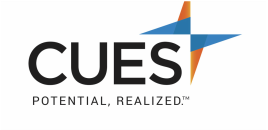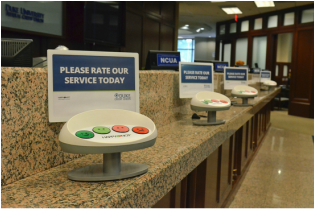|
HR Answers: Happier Members
July 2015 – Vol: 38 No. 7 Duke University Federal Credit Union deploys kiosks to measure service standards When $123 million/15,000-member Duke University Federal Credit Union, Durham, N.C., was seeking to create a more consistent member experience, it chose HappyOrNot’s innovative customer satisfy action kiosks. With the kiosks already in use by credit unions throughout the U.S., Duke University FCU took the use of the smiley face devices to a new level by deploying them at every member interaction station within the credit union. From the moment members walk into the lobby, until the time they leave, they are presented with the opportunity to express their satisfaction level. The fun-to-use kiosks are strategically placed at the greeter station, each of the loan officers’ desks, the teller windows, and even (soon) the drive-up stations. The results have been extremely rewarding for the credit union. “The HappyOrNot kiosks have resulted in a more consistent customer experience,” says Duke University FCU CEO Daniel Berry, CCE, a CUES member. “The presence of the kiosks and the immediate feedback they provide is always in the mind of our staff, encouraging them to be more careful to do their absolute best to serve every person who comes in the door.” Tied to Employee Bonuses The credit union deployed its 21 HappyOrNot kiosks beginning April 15. Starting Jan. 1, 2016, the bonuses of every member-facing Duke University FCU employee will be partially tied to the HappyOrNot kiosk reporting results. “Once we have six months’ worth of data, we will set the 2016 targets,” says Berry. “This gives our staff as well as members time to become comfortable with the technology. Several months of data will provide us a better average to set incentives. In addition, we wanted employees to recognize that one frown wouldn’t eliminate their incentive. However, we need to provide the best service possible so one frown doesn’t lead to another.” For the bonus structure, “there will be a graduated scale,” explains Berry. “For example, $100 for 95 percent satisfaction plus an additional $100 for each percentage point above 95 percent. The theory is to motivate employees to try their best.” While the incentive will be paid on the individual employee’s results, the benchmark employees are working toward will be set based on the department, says Berry. Reports Help With Coaching HappyOrNot kiosks record customer satisfaction at the point of service by asking a single question (in Duke University FCU’s case: “Please rate our service today”) to which members respond by pushing one of the four smiley (or not) face buttons. Responses are recorded along with the date and time, and uploaded nightly to the HappyOrNot central server via a cell SIM card contained within each kiosk. The cloud-based service generates the reports and emails them to management the following morning providing an indication of overall satisfaction levels and, more important, specific times of the day when those levels can be improved. Individual staff members also receive an email with their satisfaction results. Duke University FCU uses the reports in multiple ways. “First, we look at satisfaction levels per department,” says Berry. “We are looking for variances: Are some of our internal processes influencing member satisfaction? Next, the daily report helps illustrate expectations between employees and their supervisor. “Trends allow managers to identify employees who need coaching. The manager can consider the underlying reasoning: personality conflict, communication differences, and/or not being able to resolve issues. Since reports are received daily, the identification and resolution of satisfaction disappointments can be handled in a quicker manner. Finally, we like how we can measure member satisfaction per employee. Having a kiosk at each workstation tells members that their opinion is important to us.” Results are Good So far, the kiosks have been a success at keeping the CU’s member service levels high and reinforcing a culture of service. “Our experience has been that consistency has been excellent,” says Berry. “A subconscious benefit is that employees treat each member individually. They understand that the opinion that matters most is the individual in front of them. As a result, the existence of the kiosk reinforces consistency. After a difficult transaction, the employee knows the next person in line is separate.” “The ultimate benefit for credit unions using HappyOrNot is that they can determine and improve upon overall credit union satisfaction levels and detect anomalies in service that can be corrected,” says Ed Gundrum, CEO of DoublePort LLC, an authorized partner of HappyOrNot . “And with the daily reports, credit unions can act quickly to address their members’ needs and provide employee coaching or training as needed.”
0 Comments
Leave a Reply. |
Archives
January 2022
Categories |



 RSS Feed
RSS Feed